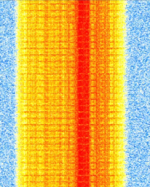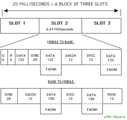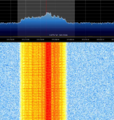IS-54 D-AMPS
| Cellular | |
|---|---|
| 1G: IS-54 D-AMPS - AMPS - Nordic Mobile Telephone (NMT) 2G: GSM - 2G CDMA (IS-95) |
Digital Advanced Mobile Phone System (D-AMPS), also known as IS-54 and IS-136, is a second generation (2G) mobile phone system standard. D-AMPS, which is a development of the 1G standard analog AMPS, was able to facilitate a smooth transition from AMPS by using existing channels and bands.
D-AMPS uses π/4 DQPSKDifferential Quadrature Phase-Shift Keying modulation. The same FDMAFrequency Division Multiple Access channeling used in AMPS is used in D-AMPS; however, each 30 kHzKiloHertz (kHz) 10^3 Hz channel is divided into three time slots with TDMATime Division Multiple Access, allowing 3 users per carrier, increasing the number of possible users on the system.
IS-136 is a development of IS-54 which adds an additional TDMATime Division Multiple Access digital control channel (DCCH) which uses π/4 DQPSKDifferential Quadrature Phase-Shift Keying, contrary to FSKFrequency-Shift Keying used in the control channel in IS-54 and analog AMPS. Additionally, IS-136 includes other features including security and SMS.
IS-54 was designed only for the AMPS (850 MHzMegaHertz (MHz) 10^6 Hz) cellular band, while IS-136 can operate on both cellular (850 MHzMegaHertz (MHz) 10^6 Hz) and PCS (1900 MHzMegaHertz (MHz) 10^6 Hz) bands. In the 90's, until the early 2000's, AT&T Wireless and other North American wireless operators used IS-136 for 2G, and branded it as "Digital PCS".
Additional Links[edit]
- IS-136 information
- IS-54 and IS-136
- Details on D-AMPS standards
- Privateline Digital AMPS Basics (Archived Website)
- Telephone World - The First Digital Cellular Systems
Video Demonstrations[edit]
Additional Images[edit]
Audio Samples[edit]
IS-54 D-AMPS with AMAmplitude Modulation modulation (recorded by DG):
IS-136 D-AMPS DCCH control channel with AMAmplitude Modulation modulation (recorded by MC4f):
D-AMPS uplink channel during a voice call (recorded by MC4f):
D-AMPS voice downlink channel during a call (recorded by MC4f):


